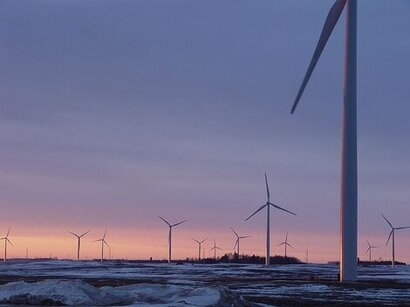
In 2020, zero-carbon electricity (composed of renewables and nuclear), generated 55 percent of Minnesota’s electricity, up from 48 percent in 2019. For the first time, renewable energy was the biggest source of electricity in Minnesota at 29 percent of total generation. Of 588 megawatts of new generation capacity built in 2020, all of it was wind or solar, marking a new record for Minnesota.
“Last year’s addition of new wind and solar capacity shows how Minnesota’s clean energy transition is happening in real time” said Gregg Mast, executive director of Clean Energy Economy Minnesota. “With the right policy levers in place, businesses can fully leverage the clean energy transition and ensure that jobs continue to grow and that the economic benefits are extended to everyone who lives here.”
Lisa Jacobson, president of the Business Council for Sustainable Energy, added that the 2021 Minnesota Energy Factsheet shows that clean energy has strong momentum that carried the industry through a challenging year, but that progress cannot be taken for granted and that for the clean energy sector to continue expanding its workforce and reducing emissions, it must be central in economic stimulus and recovery policy.
The Factsheet is a companion to the 2021 Sustainable Energy in America Factbook, which outlines key trends influencing national and state investment and economics, energy supply, and energy demand. Both resources are commissioned by the Business Council for Sustainable Energy (BCSE), with research by BloombergNEF.
Highlights from this year’s Minnesota Energy Factsheet include:
More than half of Minnesota’s power came from zero-carbon sources in 2020. Meanwhile, coal’s contribution slipped from 30 percent in 2019 to 25 percent in 2020.
Renewable generation rose from 18 percent of generation in 2011 to 29 percent in 2020, becoming the #1 source of electricity in Minnesota last year.
82 percent of all new power-generating capacity built in Minnesota in the last decade came from renewable energy, adding 3.6 GW.
Power sector emissions in Minnesota fell nearly 17 percent in 2020 alone. Since 2011, emissions are down 40 percent.
Major Minnesota-based corporations have increased their efforts to procure renewable energy. 3M Co., Cargill Inc., Ecolab Inc., Target Corp., and General Mills between them have now signed agreements to power their operations with either wind or solar energy from projects representing over 1.3 gigawatts of capacity.
Excluding the production tax credit (PTC), new wind builds are the cheapest form of new electricity generation in the state. With the Investment Tax Credit (ITC), new solar builds are competitive with new combined-cycle natural gas plant builds on a $/MWh basis in Minnesota.
Electric vehicle sales in Minnesota are accelerating as battery prices have fallen. From 2016 to 2020 annual registrations of battery electric vehicles increased 535 percent to 3,800 units. Annual plug-in hybrid electric vehicle registrations rose 150 percent to 2,000 units.
The American Council for an Energy-Efficient Economy (ACEEE) ranked Minnesota 9th out of all 50 states for its overall energy efficiency programs (the highest ranking in the Midwest).
For additional information:

